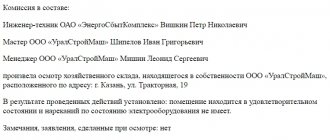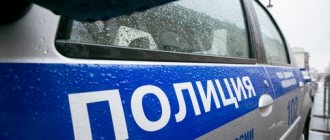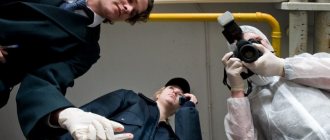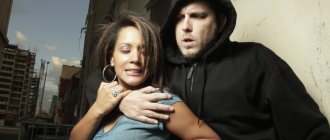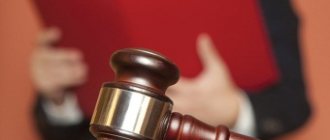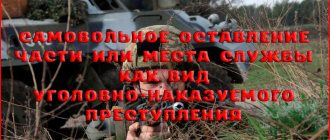What it is
The scene of the incident is a section of the area or premises in which signs of a crime have been identified. It often happens that there are several places where traces of criminal activity are found.
The inspection of crime scenes itself refers to urgent investigative actions. It is aimed at solving several issues at once:
- Establishing the features of the place.
- Recording and studying the situation.
- Obtaining other factual data and evidence, thanks to which it is possible to draw conclusions about a certain mechanism associated with the crime.
Free legal consultation
+8 800 100-61-94
It happens that a crime is committed in one place, and traces are discovered in another. Then the crime scene and the incident are clear. It also happens that these objects coincide with each other.
It is also useful to read: How to write a statement about beatings
Preparatory stage of the investigative action
In turn, this stage is divided into two blocks:
- The first is to ensure the safety and integrity of the crime scene, as well as the traces that are located on it. Having received a message from the duty station, the investigator decides to go to the area, but before doing so he checks that all measures have been taken to protect the area from strangers. At this stage, the area of the inspected place is recorded and a patrol is posted around the perimeter. In some cases, the help of a local police officer or patrols is used. If necessary, call an ambulance or fire brigade. It is also extremely important to ensure that eyewitnesses are present to interview them and investigate the crime without delay. At this stage, the methods for inspecting the scene of the incident are determined, which means the material resources that will be needed to travel, and the experts who will provide assistance. The circle of the task force is determined depending on the specifics of the crime. It is mandatory to involve an investigator, an interrogating officer, and several witnesses; if there is a human body, a forensic expert or a doctor is called. Additionally, witnesses, a victim or a specialist, as well as dog handlers and many others may be involved.
- The second part involves the arrival of a group of employees at the scene of the incident. If people are involved in the implementation of a crime, you need to check their well-being and seek medical help. Check whether the activities listed in the first block of the preparatory stage have been completed. If there are eyewitnesses, the investigator interviews them and records their testimony in the protocol. At this stage of the work, an assessment is made of the incident: is it a crime? In addition to all protocols, one generalizing one is drawn up, which reflects all the results.
Who performs the procedure
Employees of investigative or inquiry bodies are the main participants in this process. The initiator of the procedure is the investigators. They are also responsible for everything related to the inspection.
Not only investigative authorities can take part in the inspection, but also:
- Dog handlers.
- Forensic scientists.
- Operatives.
- Employees of other departments.
So-called investigative groups are formed from them. Other interested parties may be involved:
- Defenders.
- Suspects.
- Witnesses.
- Translators.
- Victims.
- Experts, specialists and so on.
Attention! During the investigation, the investigator, investigator or prosecutor is responsible for studying documents and various items. A doctor or medical examiner is involved if a dead body is discovered.
If the place is located in a hard-to-reach facility, poses a danger, or has no access routes, it is permitted not to involve witnesses. In other situations, this action is also considered a mandatory requirement. Then the investigator records everything that happens and makes notes in the protocol.
Working stage
Also divided into two stages:
- A general inspection, during which the employee navigates the site, describes the location, it is advisable to use coordinates and reference to large objects that will be visible in any weather conditions and will not disappear over time. At this time, the so-called starting point from which observation will be carried out is also determined. It is also described in detail. Here, various methods and methods of inspecting the scene of the incident are used. The investigator chooses a tactic, whether he inspects the entire territory or only the alleged path of the criminal.
- Detailed inspection. The name itself says that at this stage of work all objects located on the territory are considered separately. If necessary, search activities are applied, and photographs of found objects are also taken. The more complete and detailed this stage of work is, the greater the likelihood of quickly solving the case.
Objects
These include:
- Traces of a crime or criminal, objects or documents that are directly related to their activities.
- Dead body.
- General situation of the scene of the incident.
- The actual scene of the incident.
The main thing is that all objects are inspected simultaneously in most cases. Then timely recording of properties and characteristics is guaranteed. Exceptions to the general rules are permissible only if there are conditions that complicate the inspection.
Final stage
At this stage of the work, methods of recording the results of the inspection of the scene of the incident are already applied - all the necessary documents are drawn up. The investigator checks whether all the activities that were planned at the first stage have been implemented; if necessary, diagrams and drawings are drawn up that will help in further work. Traces of a crime, evidence, objects are individually packaged and sent to an expert center or laboratory. If there is a corpse, it is sent to the medical examiner's office. Preliminary results are summed up and an assessment of the committed act is given, the investigator builds tactics for conducting the investigation and orients the direction of work.
Order of conduct
Article 177 of the Criminal Code of the Russian Federation contains information related to the procedure for organizing the procedure. It also says here that you can move some objects and documents to another environment when necessary. For example, if a routine inspection is difficult, or the event takes too much time.
The qualifications of the activity are the most important factor on which it depends on which scenario the inspection will be carried out in a given case. This is also influenced by the investigator with his qualifications and experience, and deductive thinking. Some traces of a crime disappear over time, so efficiency is important. The special nature of other objects makes the current study completely impossible.
Reference! It is mandatory to draw up an inspection protocol, which also records all actions taken. But there are no clear regulations in this regard in the law. The main thing is to have as much documentary evidence as possible. The procedure must be consistent with the nature of the act itself.
Methods and methods for recording results
Recording the inspection results is of great importance. It is thanks to this stage of the investigator’s work that all the work done will be visualized, and the results can be used in the process of proof. Modern achievements of science and technology are increasingly improving this aspect of work. Let's look at how and with what help this is done.
Methods for recording the inspection of the crime scene are used at the final stage of the work, when the investigator begins to summarize and combine the data obtained. The main means of consolidating the results is to draw up a protocol for examining the scene of the incident. This procedural document has evidentiary value and can be used in court. That is why requirements are put forward to him, which are described in the Criminal and Criminal Procedure Codes. We will not separately consider the structure of the protocol; we note that it reflects the general description of the territory, the territorial location of the place, the situation and the complex of traces of the crime.
The protocol is the main way of recording the inspection of the scene of an incident; often an application is attached to it, which more clearly shows the essence and situation of the area.
What stages does it consist of?
All participants in the investigation must be aware of the things that were found during the investigation. The home is inspected only if the owners give their direct consent. Otherwise, the investigator informs the court about the organization of appropriate activities.
If an object owned by an enterprise is being searched, the presence of a legal representative is required. The inability to be present during the resolution of the issue is recorded in writing. Even if the investigator does not agree with some of the requirements, he is obliged to fulfill them.
Preparatory
This stage begins when the investigator decides that a particular action is necessary. Once a decision is made, other responsibilities arise:
- Ensure crime scene security prior to arrival. That is, the furnishings and various objects must remain inviolable.
- Taking measures to mitigate or minimize the consequences of a crime.
- At the time of arrival, it is necessary to ensure that all persons who can provide additional information are present.
- A preliminary decision on which specialists will be involved in the examination.
- They make a proposal on the composition of the operational group, which goes to the inspection site.
- Checking the readiness of technical equipment for the procedure.
Search and research
It begins almost immediately after the investigator arrives at the scene. But before the actual inspection, several important issues are also resolved:
- Measures are taken to provide victims with first aid if such measures were not previously available.
- All unauthorized persons are removed.
- Witnesses are invited to participate in the inspection. The full circle of participants is finally determined. Additionally, training on rights and responsibilities is provided.
- Collection of preliminary information that must be taken into account during the inspection.
- Other actions that may be needed at this time.
First there is a general overview, which also includes solutions to specific issues:
- Orientation.
- Determining the boundaries and spaces that are relevant to the incident.
- Resolving the issue regarding the point and method of inspection in order to determine the sequence.
- Selecting a position to conduct orientation and survey photography.
Then the whole range of issues regarding the situation and objects that are in the current place is examined. The relative position of objects and the relationship between them are separately determined. Examine the appearance and condition in as much detail as possible. Everything is recorded by filming and drawing up diagrams and drawings. The necessary notes are created for the future protocol.
When the general inspection ends, move on to the detailed one:
- A thorough and detailed inspection of each object.
- Taking all measures to detect traces of the crime and the criminal.
- Identification of objects with traces, removal of traces whenever possible.
- Recording negative signs of the condition of objects.
- Checking general inspection data.
- Nodal, detailed photography.
Attention! The investigator himself chooses the method according to which the examination is carried out. Separately choose the order and principles according to which subjects are studied. There are three methods of inspection - frontal and eccentric, concentric.
They differ from each other only in the pattern according to which everyone moves indoors. There are initial, repeated and additional examinations, the need for organizing which also depends on the specific case.
The above methods can often be combined with each other. This applies to both primary and secondary examination.
Final
Once the various site surveys are completed, the final stage begins. And here one single action cannot do it.
- Drawing up inspection protocols, plans and diagrams, drawings.
- Fingerprinting of the corpse and sending to the morgue, if necessary. The investigator also takes part in this final stage.
- Packing of objects that were seized from the scene. Only regulatory authorities are responsible for this, at whose request the entire procedure is carried out in principle.
- If objects are impossible and impractical to remove, measures are taken to ensure their safety.
- Taking measures to study statements and other information received from outsiders.
The work is assessed in terms of completeness and success. But sometimes even all the collected data is not enough to obtain an objective conclusion.
Crime scene: cinema and reality
Author: Danila Maltsev, criminologist, screenwriter and author of the Telegram channel @popCrim.
Few people think of meticulously looking for absurdities in old detective films and TV series. When describing “ancient” technologies, some temporary assumptions are possible. For example, in 1892 in Argentina, for the first time in history, a criminal was identified using fingerprints. The viewer will not mind if you use fingerprinting in your series, where the action takes place in the late 19th - early 20th centuries. Let this science reach Russia only in 1906.
But if a movie shows modernity, taking into account the viewer’s observation and erudition, then it is important for the authors to show how everything happens in reality. This is where the balance between the conventional and the real becomes important. And if the author sweated enough over it, this will not allow the viewer to throw up his hands and indignantly turn off the series.
There are three points in this fragile system of dramatic balance:
- it should be;
- how this happens in reality;
- as it is shown in the movies.
Which depends on how it was written, how they wanted to implement it, and what they gave up during the filming process. But, probably, this is a separate topic for discussion - already with the producers.
Detective and forensic stories begin with finding the subject of the crime - the discovery of the body and inspection of the crime scene. Inspection is the initial and practically the most important stage in ensuring the success of solving a crime. Therefore, today I will pay special attention to the crime scene inspection (CSI) and the process of obtaining evidence.
Individual protection means
WMD begins with the cordoning off of the suspected crime scene by the investigative team. The territory can be expanded if new details are revealed in the process. Next, forensic scientists enter the crime scene.
TV series “Bones”, season 7, episode 5 The main headache of real investigators and criminologists since molecular genetic testing began to deservedly win back its dominant status is personal protective equipment. Suits with a hood, hats, shoe covers, gloves, masks and even beard nets. Something that prevents foreign DNA from being brought into a crime scene. This is a standard protocol.
In the cinema - depending on how. The main characters don’t even wear hats in winter to look good on camera. Don’t dress them up in robes and masks.
CSI Season 15 Episode 6 Here's a great example of why precautions are needed: an expert holds up a hair he finds in front of his face and says he hopes to find DNA there. Unfortunately, in the absence of a mask, there is a high probability that the DNA of the expert himself will be found there.
Most often, investigators enter a crime scene after forensic scientists have done their work. Sometimes it's a parallel process. Unlike crime series, detectives do not show the moment of intersection with criminologists. For example, as in almost every episode of Castle, where the main characters come over the fence with coffee.
But when new details are discovered, during additional examinations it is still necessary to call criminologists again.
Fingerprinting
The film "Seven" For example, Morgan Freeman's character calls a fingerprint expert who uses a can of compressed air to get rid of excess powder. No one does this: if necessary, use a very light brush. For example, from marabou feathers.
Why use fluorescent powder and an ultraviolet light source when it has previously been shown that the marks were perfectly revealed by black powder, since the wall itself is white? Well, just for the sake of cinematography.
Expert Light
The series “Trace”, the series “Centripetal Force” “Trace” is our CSI not only in meaning, but also in its influence on the minds of the audience, so I will mention it more than once.
Forensic scientists call the source of ultraviolet light “expert light”: the device combines not only different lengths of UV waves, but also ordinary light, and sometimes also a source of infrared radiation. Crime scenes need something compact and versatile.
In this example, the hero in the story is looking for traces of a fluorescent protein. And it uses a standard banknote detector. Firstly, the almighty FES could have purchased a more professional flashlight. Secondly, active ultraviolet treatment destroys biological traces, so it was worth choosing a longer wavelength. Thirdly, the use of filtering glasses is mandatory: this is necessary not only for convenience, but also simply to better see what is lit and what is not, and also for safety reasons.
TV series CSI, season 15, episode 6 During weapons of mass destruction, you need a lot of light, if time and technical resources allow. In cinema, apparently, we are dealing with the criterion of sufficiency for cinematography.
You can see in this still image that there are a lot of lighting fixtures that should be working and flooding the room with uniform task light. But in fact, the heroes explore everything with the help of flashlights.
Packaging and inventory of materials
TV series “Inside”, episode 25 – “Dancer” Packaging and inventory of seized materials is very important. No participant in procedural actions, except the criminal, wants the materials to be destroyed from the moment they are seized, right?
But cinema must show, so transparent bags are often used on the screen to package anything.
Removal of objects for any types of subsequent examinations, except for odorological examination (odor examination), should be carried out in breathable packaging (boxes, envelopes, wrapping paper), especially if these are biological objects, so that they do not become moldy, deteriorate, or decompose.
Crime scene cordon
TV series “How to Get Away with Murder”, season 1, episode 10
They often show people walking back and forth at the crime scene. What are they doing here, you ask. I will answer: I have no idea.
This series with a self-explanatory title answers its question in one shot: you just need to ensure that a huge number of people rush around the crime scene right at the moment of inspection, including witnesses and suspects.
TV series “Trace”, series “Dating for Marriage”
Strangers at crime scenes are common not only in foreign films, but also in our seemingly less crowd-pleasing TV series. But it is worth noting that strangers also meet in reality. The more famous the victim and the more resonant the case, the more high-ranking outsiders there will be.
But here the hero has a professional camera with a ring flash in his hands, which is a plus. However, the downside is that he does not shoot according to the rules of forensic photography: not perpendicular to the plane of the object and without a scale ruler.
Photographing
TV series “Ours”, episode 25
By the way, about photographing forensic objects: you won’t be able to photograph a shoe print from this angle. Even if something is visible in the photo, it will not matter for comparison with the suspected shoes. This is probably why photographs do not play any role further in this series. Well, why, one might ask, take up screen time?
Blood stain detection
TV series "Trace", episode "The Most Terrible Enemy"
Finally, a common mistake that has been going on for decades from series to series. What is strange, given that it costs practically nothing to test, so to speak, on the knee, that this does not work in reality.
In TV series, blood often glows under UV light. But in reality this is not so. Quite the contrary. Blood absorbs ultraviolet radiation, so even against a dark background under UV rays it will stand out as a dark spot.
***
A high-quality inspection of the crime scene is a key and fundamental stage of investigative measures. However, all these shortcomings on the screen can be explained from production, dramaturgical and visual points of view. And they in no way prevent these films and TV series from remaining truly beloved and popular works of art. And to show the real actions of criminologists and investigators, there are documentary series.
- Pravo.ru
Negative circumstances when inspecting the scene of an incident
Usually these are circumstances that contradict the usual course of things and the idea of them.
Examples:
- Necessary items and objects are missing in this environment.
- There are objects, but the very fact of their discovery is unusual.
For example, we inspected a store where, according to the seller, a major theft had been committed. The investigator took a closer look at the following circumstances with which the case was connected:
- Disorder in the sales area.
- A large number of items allegedly left behind by criminals.
- The size of the hole in the ceiling, and so on.
Important! There were ideas about a possible mechanism, but the current situation completely contradicted them. Therefore, there were negative consequences, due to which a version of the theft was staged. During further investigation it was confirmed.
Dramatizations are often used to solve the following problems:
- Creating the appearance of another crime to hide the real offense.
- Covering one event with another, with different compositions.
- Creation of a false crime about certain facts.
Identifying such circumstances is important because they also have their own evidentiary value.
Frontal method of inspection
In forensic science, methods of examining a crime scene are divided into three large groups: frontal, eccentric and concentric examination.
The frontal approach is otherwise called linear in science. In practice, it involves the tactics of exploring a large area of terrain; as a rule, this is not a room, but an open area. In accordance with this methodology, the entire territory is divided into strips, each of which has a starting and ending point. In most cases, the stripes run parallel, so they all have the same beginning and end, they are opposite each other. The width must be chosen so that each part of the territory can be clearly viewed by a person. For convenience, these stripes are marked materially with the help of pegs and rope (ribbon), so as not to be mistaken. This approach is one of the main methods of inspecting a crime scene, which is often used when the area is large.
Differences from a search
An inspection cannot be classified as a compulsory action. The objectives of this event are more extensive than inspections. When it is necessary to carry out investigative actions in a home, various problems and obstacles often arise. If citizens do not agree, but there is reason to believe that they are hiding something, there are clear grounds to conduct a forced inspection.
A search is carried out if the likelihood of concealing details of the crime remains high enough.
But both for a search and for inspection of residential premises, a court decision is a mandatory requirement. Otherwise, constitutional rights related to the inviolability of the home are violated.
Eccentric method
It is advisable to use it when the boundaries of the territory on which there are traces of a crime are difficult to determine. In this case, the investigator stands at the approximate center of the area, which is determined by eye. Such a center could be a safe that was broken into by a criminal, a corpse, a table, a closet, or something else that is of great importance to the case. The investigator's movements proceed in a spiral, from the center to the periphery. The scale is determined by the employee independently, depending on the details of the incident. Like the previous method, this one is used in most cases in open areas. Each method of conducting an inspection of a crime scene is unique in its own way and convenient in a particular case.
The eccentric and frontal methods are preferred when exploring open areas that are not limited by clear boundaries. Each approach has its own nuances that help the investigator in implementing the investigative action.
Attracting witnesses
The specifics of conducting investigative actions with the participation of these persons are discussed in Art. 170 of the Code of Criminal Procedure of the Russian Federation, an inspection of the scene of an incident with witnesses is carried out at the discretion of the investigator or on the basis of a petition from the participants of the event.
Cases of involving at least two witnesses in the implementation of investigative actions are established by norms 182, 183 (part 3.1), 193 and 184 of the Code. In the cases provided for in Art. 177-178, 155, 181, 183 (except for part 3.1), 185 (part 5), 194, 186 (part 7), the involvement of these persons is carried out at the discretion of the investigator.
There is no norm among the above-mentioned articles 176. Accordingly, according to the Code of Criminal Procedure of the Russian Federation, an inspection of the scene of an incident without witnesses is completely legal.
If, by decision of the investigator or on the basis of a petition from the participants, these persons were nevertheless involved in the event, the purpose of the action, rights, duties, and responsibilities established by norm 60 of the Code are explained to them before it begins.
The meaning of the investigative action
The inspection is the first and urgent action that the investigator performs even before the initiation of a criminal case. The results will help to form a general understanding of what was done, whether there is a crime, what the traces are, what to do next and what the tactics of the task force are.
We have analyzed the main stages, types and methods of examining the crime scene, which create a general impression of the essence of the investigative action. Further investigation of the case depends on the correctness and completeness of the results.
Documentation
The general rules for drawing up protocols of investigative actions are enshrined in norm 180 of the Code of Criminal Procedure of the Russian Federation. When examining the scene of an incident, the investigator records all his actions; discovered objects, traces, documents, etc. are described in the form in which they were found.
The protocol is drawn up in compliance with the requirements of Article 180 of the Code, as well as 166, 167 norms.
In the document, the investigator indicates the time and briefly describes the weather and lighting under which the crime scene was examined. The Code of Criminal Procedure of the Russian Federation contains a requirement to indicate in the protocol the technical means used during the examination and the results of the examination. The document also provides the characteristics of the seal with which the seized items were sealed, and the address to which they were sent after the investigative action was carried out. After completion of the investigative action, the subjects participating in it and the investigator must sign the completed form.
According to the Code of Criminal Procedure of the Russian Federation, when examining the scene of an incident, measures must be taken to preserve the integrity of the discovered documents, traces, and items of evidentiary value.
Sample and rules for drawing up a protocol for examining the scene of an incident
The document is drawn up in accordance with the requirements of the Code of Criminal Procedure. As a rule, it takes up several pages of handwritten or printed text. The protocol consists of several sections, the contents of which are described below.
Introductory part
In the first part of the document you must indicate:
- date of inspection;
- location;
- exact time (start of examination and end);
- Full name and full job titles of the persons who conducted the inspection (investigator, criminologist, other specialists);
- Full name and registration address of witnesses;
- a note that before the start of the inspection, the investigator or other persons explained to the witnesses their basic rights, duties and responsibilities;
- signatures of witnesses confirming this fact;
- links to articles of the Code of Criminal Procedure governing the inspection procedure and drawing up a protocol.
Main part
It is this part that contains a description of the inspection of the crime scene - the process itself, as well as its results (characteristics of the premises, description of the objects found). The main part details the following information:
- Location (address, description) of the scene of the incident, its boundaries, along which the territory can be easily identified, characteristics. When describing an inspection of any premises, indicate not only its address, but also the purpose of the building, the number of floors, and its location in relation to other buildings.
- Paths that lead to the place where the incident occurred, a description of the entrance and exit from this room (1 or more).
- Characteristics of surfaces - walls, windows, floors, ceilings.
- Characteristics of lighting and heating.
- All objects with an indication of the method of their recording - oral description, copies of documents, photographs, video recordings, etc.
- Special circumstances are a description of the situation that is specific to a given incident: for example, objects simulating an attack, robbery, staging, etc.
All premises are described sequentially as they are examined. Qualitative and quantitative characteristics of the territory are given (area, ceiling height, if relevant). In conclusion, it is necessary to describe the items that were seized from the inspection site as evidence. They should be given a detailed description, indicating the composition, external features, characteristic details, and packaging, if available.
Signatures of inspection participants
The final part of the document contains the signatures of all parties involved in the procedure. Here it is necessary to indicate that the participants were deliberately notified of exactly what methods of recording facts would be used during the inspection (photography, audio, video recording, etc.). Citizens put their signatures and transcripts of signatures (last name, initials).
What else may be indicated in the document
Also, if necessary, the protocol indicates:
- any facts of refusal of citizens to participate in investigative actions or sign a document;
- statements from each participant, which can be received both before and during the survey;
- consent from the owners and/or residents of the residential premises with the examination;
- questions and comments from the suspect’s defense attorney or his legal representative.
All this information is included in the final part. Thus, the inspection first contains a description of the premises/territory and the items found, and then comments from the participants in the procedure (if any).
Annexes to the protocol
As attachments, papers and other materials are provided that clearly characterize the surveyed object. It can be:
- plans;
- scheme;
- blueprints;
- sketches with descriptions;
- results of photo or video shooting;
- discs and other audio recording media;
- casts from objects, prints, etc.
Appendix to the protocol
Plans, photographs, video recordings can be used as an application:
- Plans are usually posted as diagrams. In the form of a symbol on paper, traces of a crime are noted - a knife, a bottle, fingerprints, sole prints or something else. Also nearby are those objects that cannot move and collapse in the near future. The plan marks the approximate distance from one track to another, as well as from the track to the object. For greater clarity, a general plan with the terrain and surrounding territory and a detailed diagram with all the traces, more detailed, are used.
- Photo table is a brighter and more visual option. A table of two columns is formed, in one the name of the object or place is signed, it is described what type of shooting was used, and the location and name of the equipment and resolution are noted in detail. In the second column, a photograph is pasted or printed that matches the signature.
- Video recording is not used that often. In the modern world, instead of witness testimony, they are beginning to use a video recording, which shows the entire course of the investigative action. Many employees still act according to the old scheme and use witnesses, some use both witnesses and a recording. This eliminates the possibility of falsifying traces and bribing the investigator. As an attachment, the video recording is attached to the protocol in the form of removable media.
All these are the main ways to record the results of an inspection of the scene of an incident. In order to compose them, drawing supplies, paper, a camera, video recording equipment, and a lens are used, which allows you to increase or decrease the size of the object in the photo. Also, if the departure takes place at night, a flash is used.
